Number Sense Teaching Resources
Browse printable worksheets, hands-on math center activities and more teaching resources designed to teach number sense in the elementary classroom.
Developing number sense is an important building block for elementary math students and unlocks a deeper understanding of numbers and their relationships. Aligned with Common Core, each worksheet, game and century activity was created by teachers with teachers — and students — in mind to help build those skills in ways that engage and excite students about numbers!
Want to learn more about number sense? Read on for a primer from our teacher team, including a definition of number sense, how to assess this important math skill and more!
What Is Number Sense?
In the most basic sense (no pun intended), number sense refers to a student's intuitive understanding of numbers and their relationships. It includes the ability to estimate and compare quantities, understand numerical patterns and relationships and make reasonable judgments about the accuracy of calculations.
When students show an understanding of numbers, their size, relationships, and how they are affected by the four mathematical operations, what they're really showing is their number sense.
In an educational setting, building number sense is closely related to other foundational skills such as problem-solving, critical thinking and logical reasoning. As our students get older, it will become a crucial skill for daily life they will use to manage finances, calculate time and make decisions based on numerical information.
Teach Starter Teacher Tip: Although the names may seem interchangeable, it's worth noting that number sense is not the same as mathematical fluency or memorization of algorithms, but rather a deep understanding of the underlying concepts and relationships between numbers.
When Does Number Sense Develop?
There is no one grade level when we're teaching students number sense — instead, it continues to develop and become more sophisticated as students progress through elementary school.
Research suggests that babies as young as 6 months old can distinguish between small and large numbers of objects, and by preschool, students are already working on number sense as they begin to learn counting and one-to-one correspondence. At this level, they're also beginning to develop an understanding of quantity and relative size — both key to overall number sense.
Number sense will continue to grow in elementary school as students become more adept at recognizing and using numbers to solve problems, and it continues into high school and — for many students — into college.
Assessing Number Sense
When we assess students for their number sense skills, there are certain mathematical concepts that they should have under their belts. These include:
- Ability to Recognize Missing Numbers in a Pattern —When kids can fill in missing numbers in a sequence, they're showing that they can make connections between numbers and develop an understanding of the relationships between them.
- Ability to Use Mental Math — Students with number sense can use mental math to solve problems involving the four basic operations.
- Ability to Engage in Systematic Counting — Children who can count systematically can more easily understand the relationships between numbers, including number magnitude, patterns, and sequences.
- Ability to Subitize Numbers — Students can use visual clustering skills to instantly recognize how many objects are in a group without physically counting them.
- Ability to Relate Numbers to Real-World Problems —For example, a student may understand that "3" means "three objects" or "three days" or "three dollars."
- Ability to Compose and Decompose Numbers — Students use number sense when they break down numbers and put them back together. For example, a student who can break down the number 10 into 8 and 2, then add the two back together to again make 10, is using number sense.
- Plus Plan
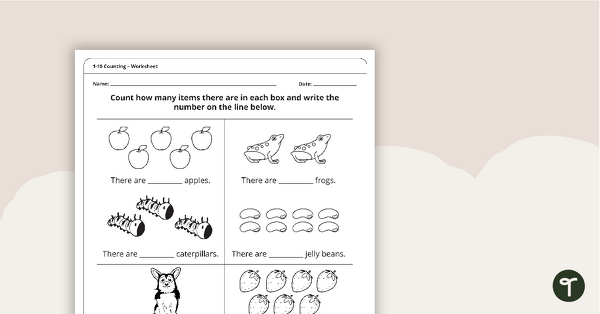
1-10 Counting Worksheet
A worksheet to practice one-to-one correspondence.
- Plus Plan
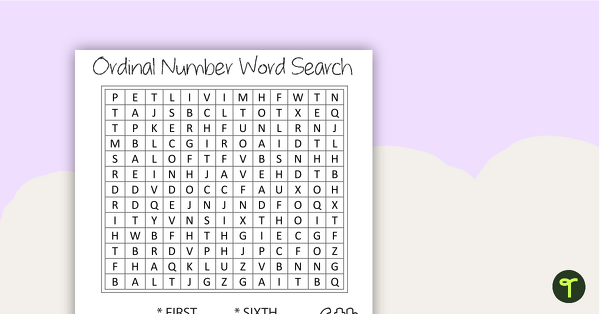
Ordinal Number Word Search with Solution
A fun word search to help your students learn ordinal numbers.
- Plus Plan
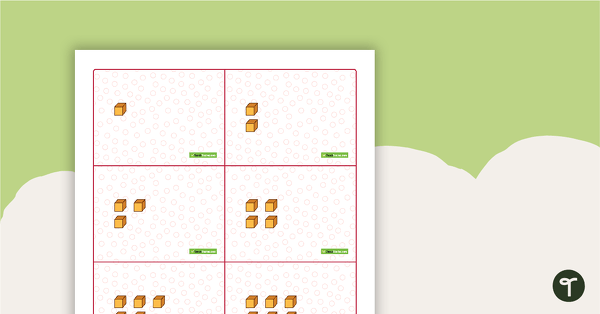
Numbers 1 - 20 Representation Matching Cards
Practice representing the numbers 1 - 20 with your students using these matching cards that enable them to engage with numbers in different formats.
- Plus Plan
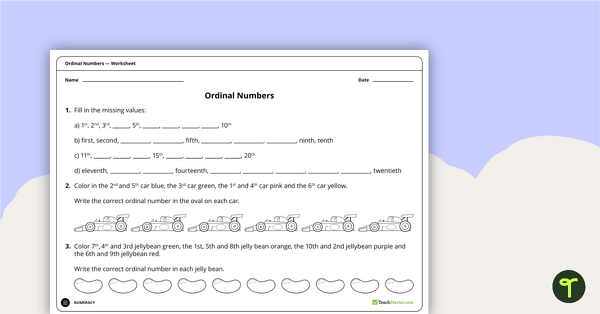
Ordinal Numbers - Worksheet
A worksheet for students to practice using ordinal numbers.
- Plus Plan

Counting to 20 - Worksheet
A worksheet to practice one-to-one correspondence.
- Plus Plan
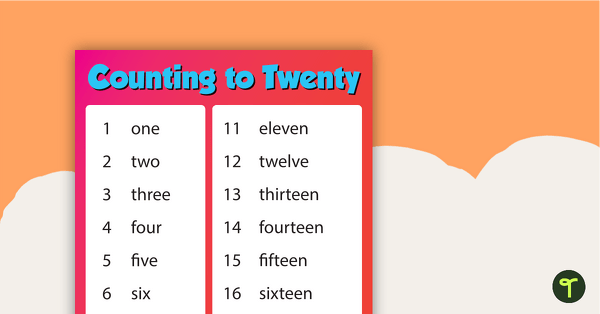
Counting to Twenty in Word Form - Color Poster
A poster showing numbers and words from 1–20.
- Plus Plan
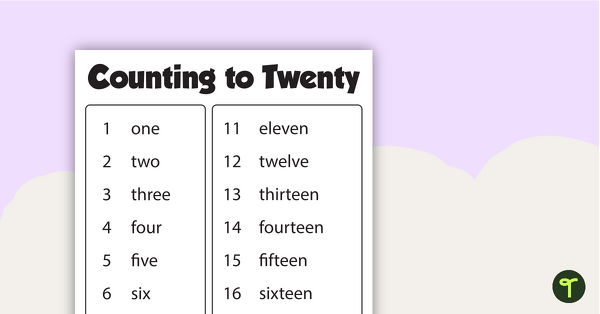
Counting to Twenty in Word Form - Poster
A poster showing numbers and words from 1–20.
- Plus Plan
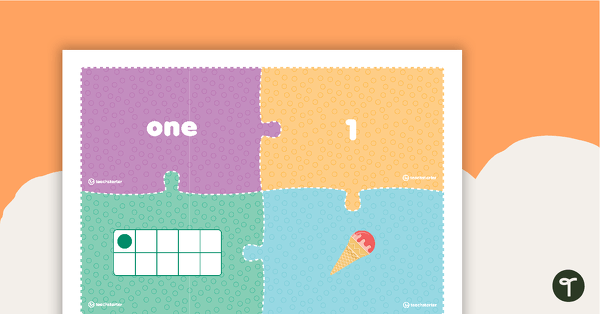
1–20 Number Matchup Puzzles
A set of 20 matchup puzzles to help students identify the different ways to represent the numbers 1–20.
- Plus Plan
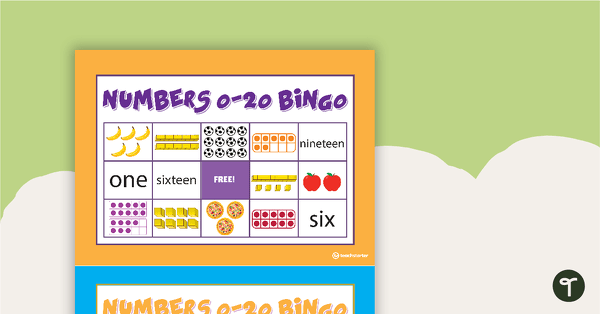
Number Recognition BINGO (Numbers 0 — 20)
Solidify your students’ number recognition skills for numbers 0 - 20 with this printable Bingo game!
- Plus Plan

Ordinal and Cardinal Number Posters
Posters connecting ordinal and cardinal numbers from 1-10.
- Plus Plan
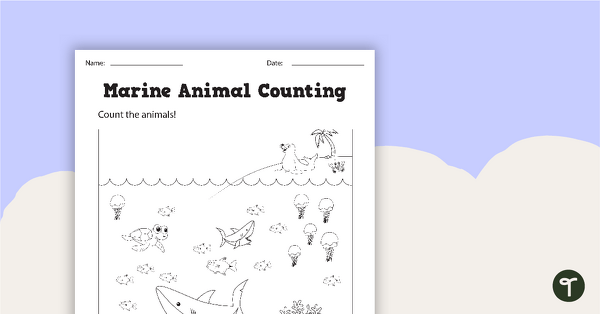
Marine Animal Counting Worksheet (0–9)
A worksheet to practice one-to-one correspondence.
- Plus Plan
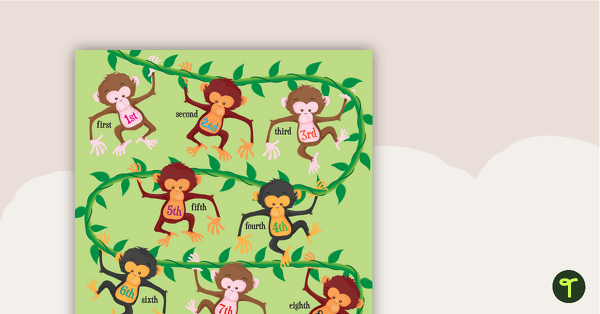
Ordinal Numbers Poster - 1st to 10th
1st to 10th ordinal numbers on one page.
- Plus Plan
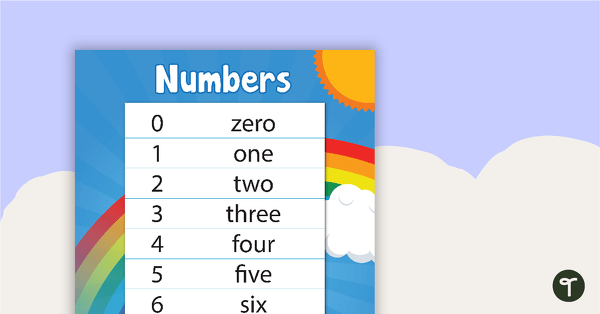
Counting to 10 in Word Form - Poster
A poster showing numbers and words from 1–10.
- Plus Plan
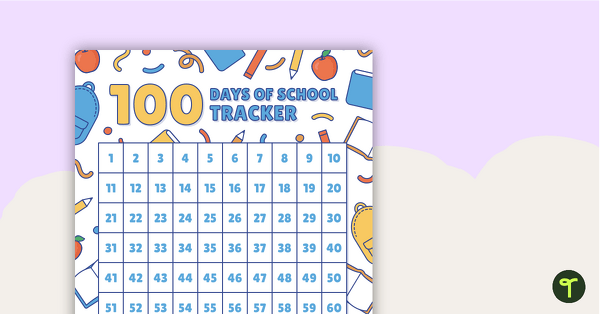
100 Days of School Tracker Poster
Use this poster with your students to track their first 100 days at school.
- Plus Plan
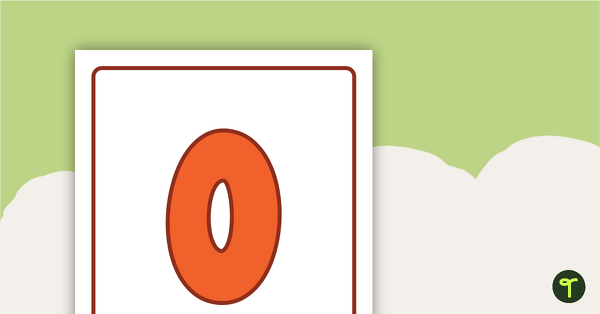
Number and Word Posters 0-99
Posters showing numbers and words from 0-99.
- Plus Plan
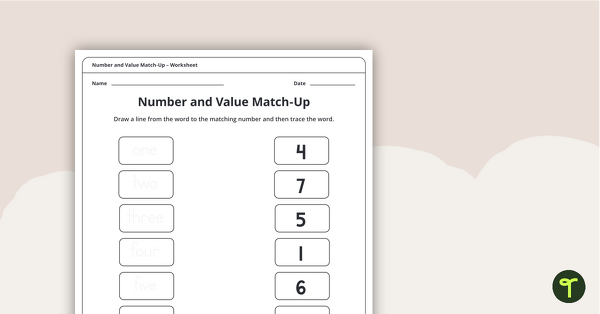
1-9 Number and Value Match-Up Worksheet
A worksheet to practice word and number recognition for numbers 1-9.
- Plus Plan
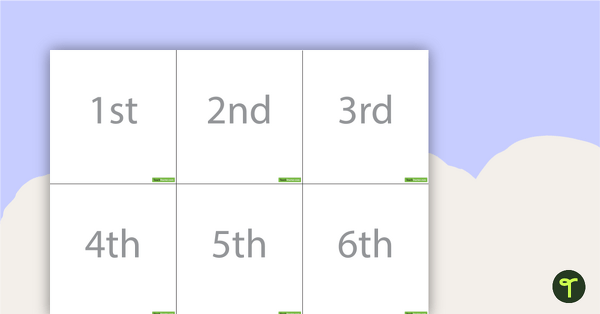
Ordinal Stories and Sorting Activity
A fun, hands-on sorting activity to use when learning ordinal numbers.
- Plus Plan

Counting Collections and Connecting Numbers PowerPoint
A 16-page editable PowerPoint presentation to use as part of a counting lesson when teaching place value to younger students.
- Plus Plan
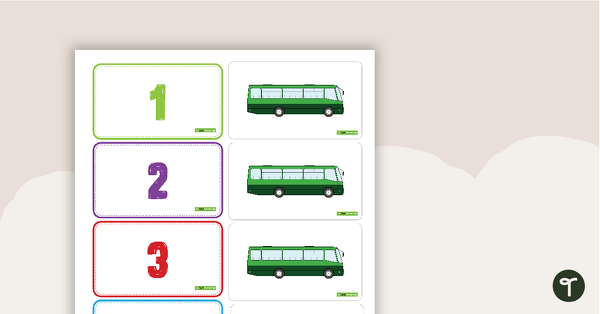
1–5 Matchup Cards - Transportation
A matchup activity to use in the classroom when working with numbers 1–5.
- Plus Plan
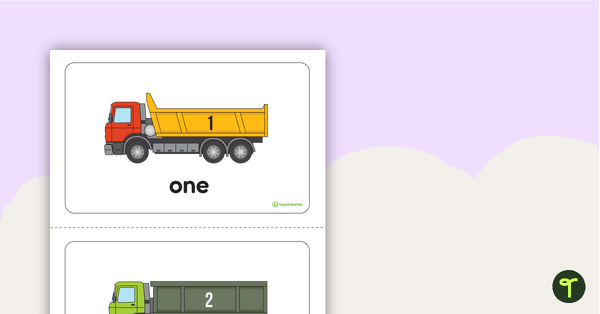
1–20 Dump Truck Number Cards
A set of number cards to use when practicing one-to-one correspondence from 1–20.
- Plus Plan
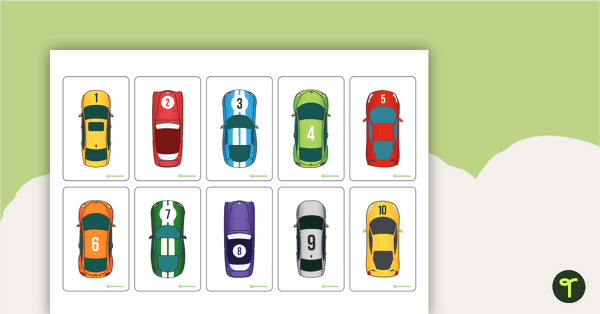
1 to 20 Parking Lot Number Match
A parking lot themed number matching activity to use in the classroom when identifying the numbers from 1 to 20 in word and standard form.
- Plus Plan
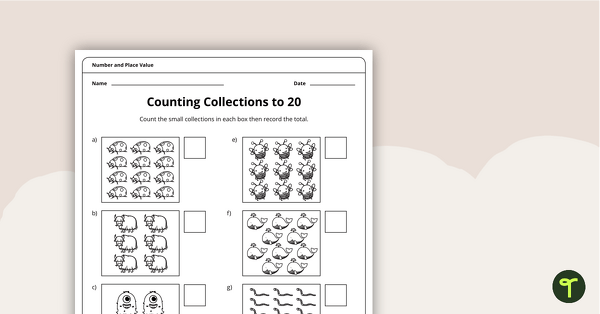
Counting Collections to 20 Worksheet
A worksheet for students to use when counting small collections.
- Plus Plan
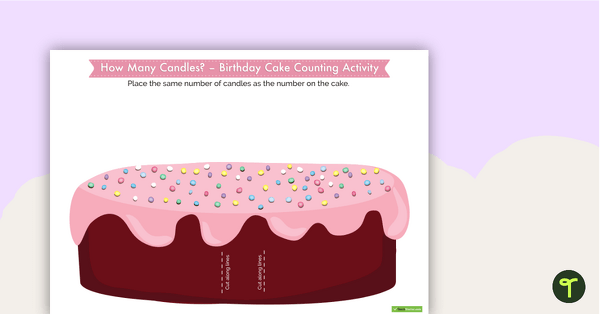
How Many Candles? - Birthday Cake Counting Activity
A fun, hands-on activity to practice one-to-one correspondence.
- Plus Plan

Racing Car Ordinal Number Posters (1st - 10th)
A set of posters to use to create an ordinal number display.
- Plus Plan
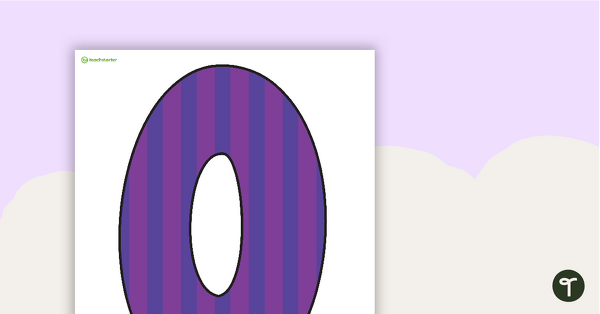
Number and Word Posters - 0–30
Posters showing 0–30 in standard and word form.
- Plus Plan

Writing Numbers 0-10 - Poster
A poster for students to reference when learning how to write the numbers 0–10.
- Plus Plan
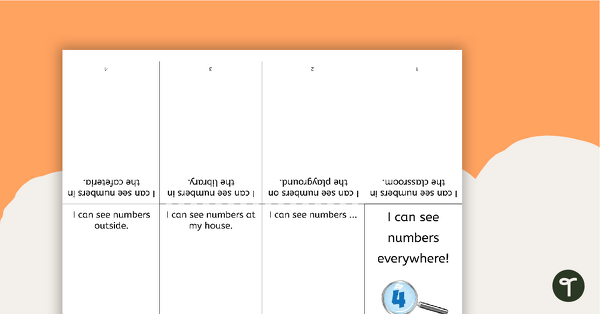
Number Recognition Worksheet Pack
Use this collection of number recognition worksheets to help your students practice recognizing the numbers 0 through 20 in many forms.
- Plus Plan
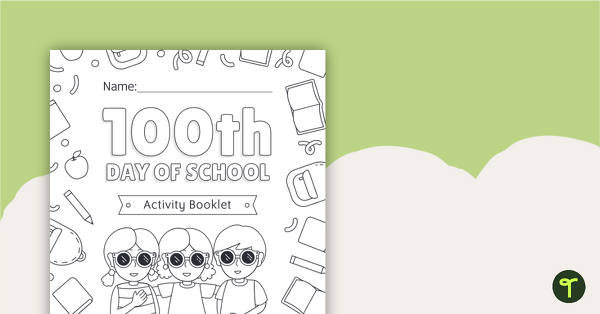
100 Days of School Activity Book
A fun booklet of activities for students to complete on their 100th day of school.
- Plus Plan
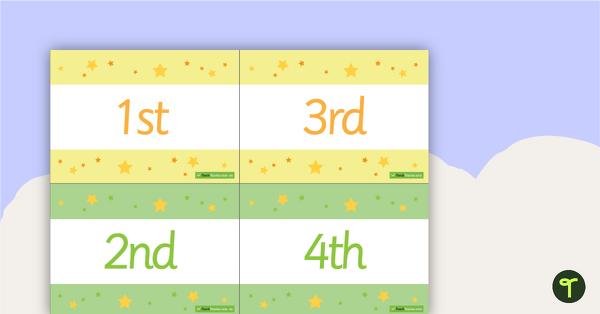
Ordinal Numbers Flashcards
Flash cards for ordinal numbers.
- Plus Plan
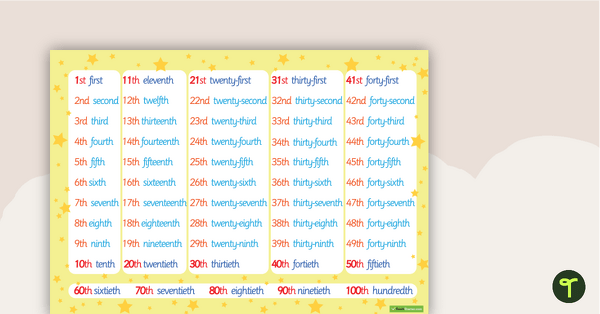
Ordinal Numbers Poster
A poster for ordinal numbers 1st - 50th, plus 60th, 70th, 80th, 90th, and 100th.
- Plus Plan
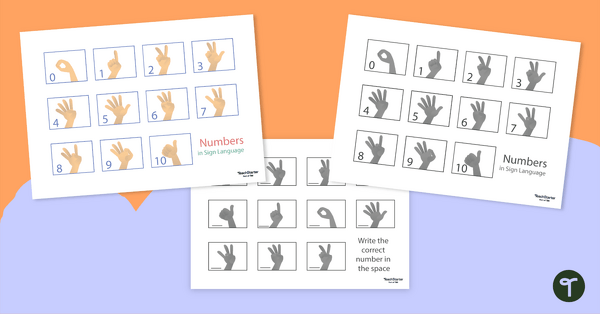
Numbers in American Sign Language Poster — Numbers 0–10
Post the numbers in American Sign Language on your classroom wall so students have an easy reference!
- Plus Plan
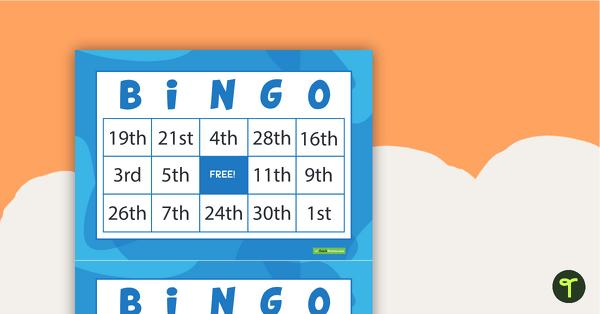
Ordinal Numbers Bingo Cards
A set of 32 bingo cards to practice ordinal numbers.